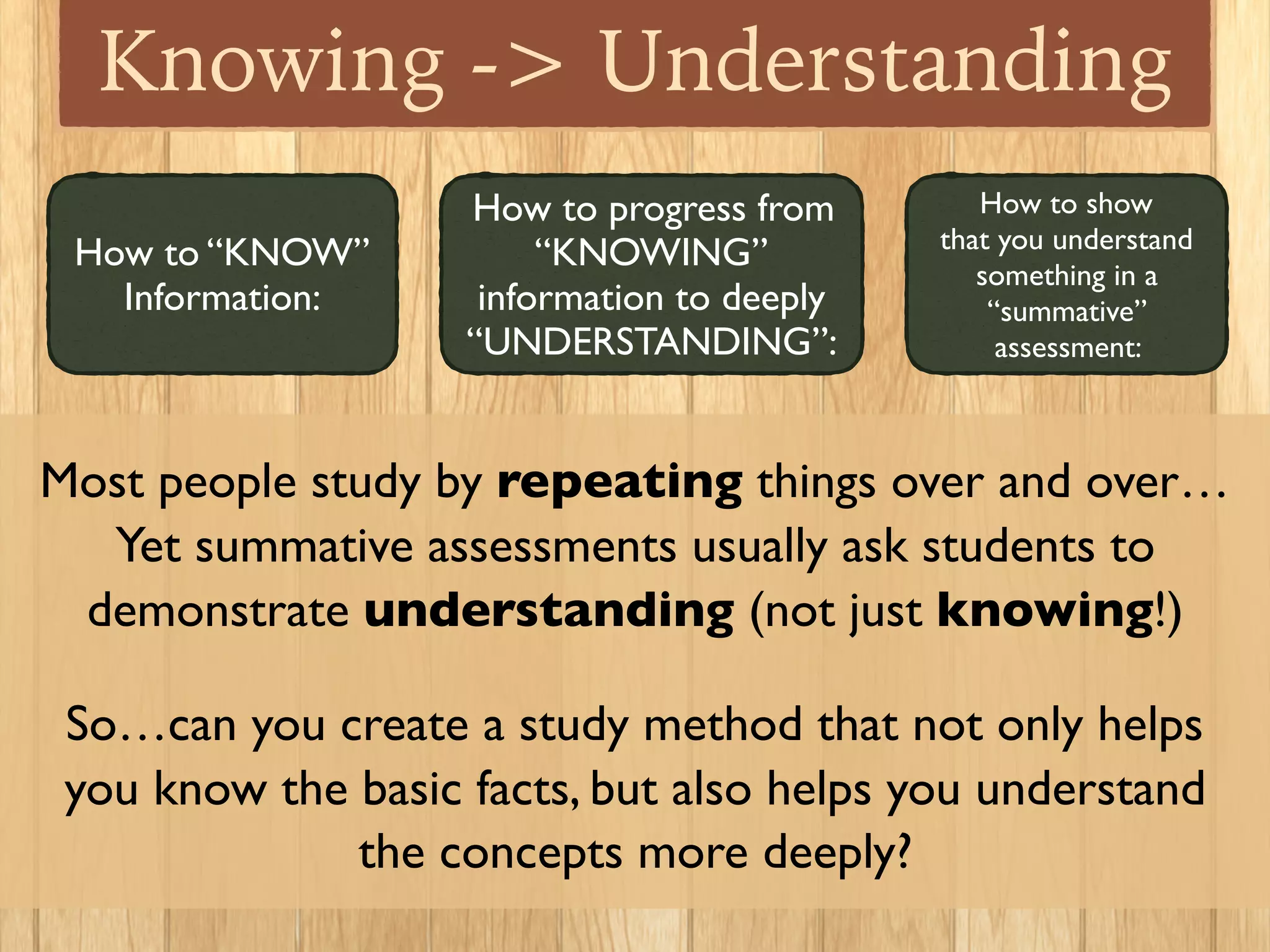This document discusses how humans learn and remember information. It explains that there are three types of memory: sensory, short-term, and long-term. Short-term memories last 1-25 seconds unless the information is rehearsed, which allows it to be transferred to long-term memory. The type of rehearsal, like repetition or organization, impacts this transfer. Long-term memory stores information more permanently through semantic networks of interconnected ideas. Memory is consolidated as connections are made in the brain and information is recalled. Understanding information requires going beyond just knowing facts to applying, analyzing, and critiquing ideas by making connections between topics.












